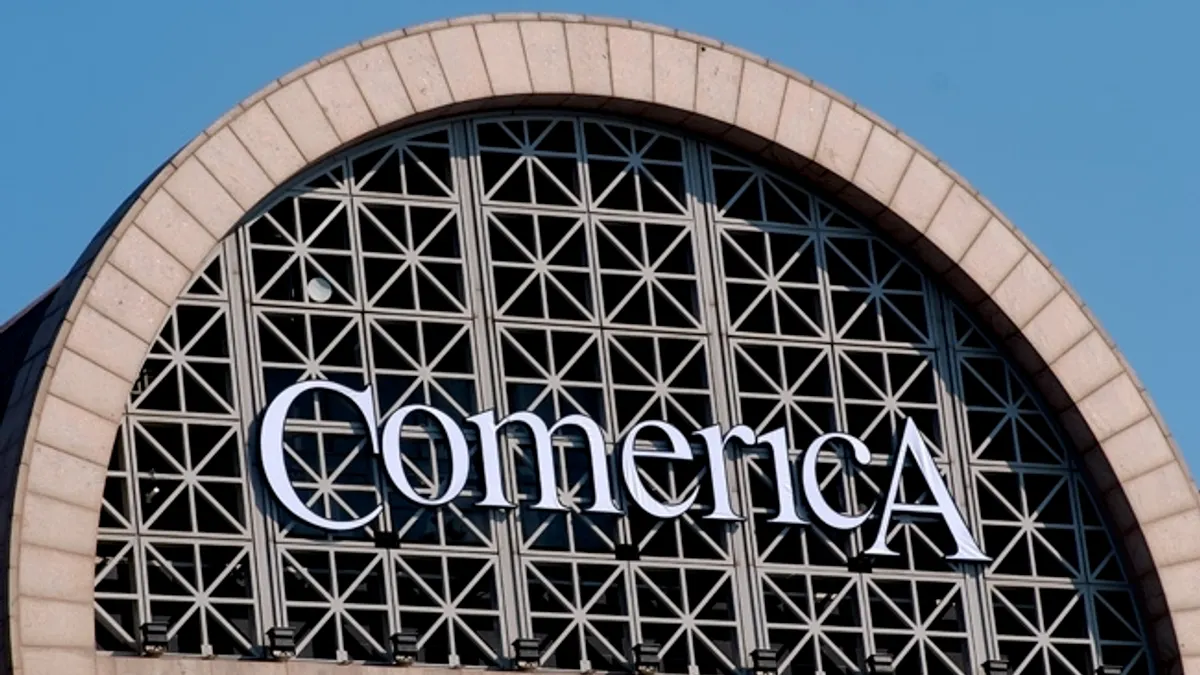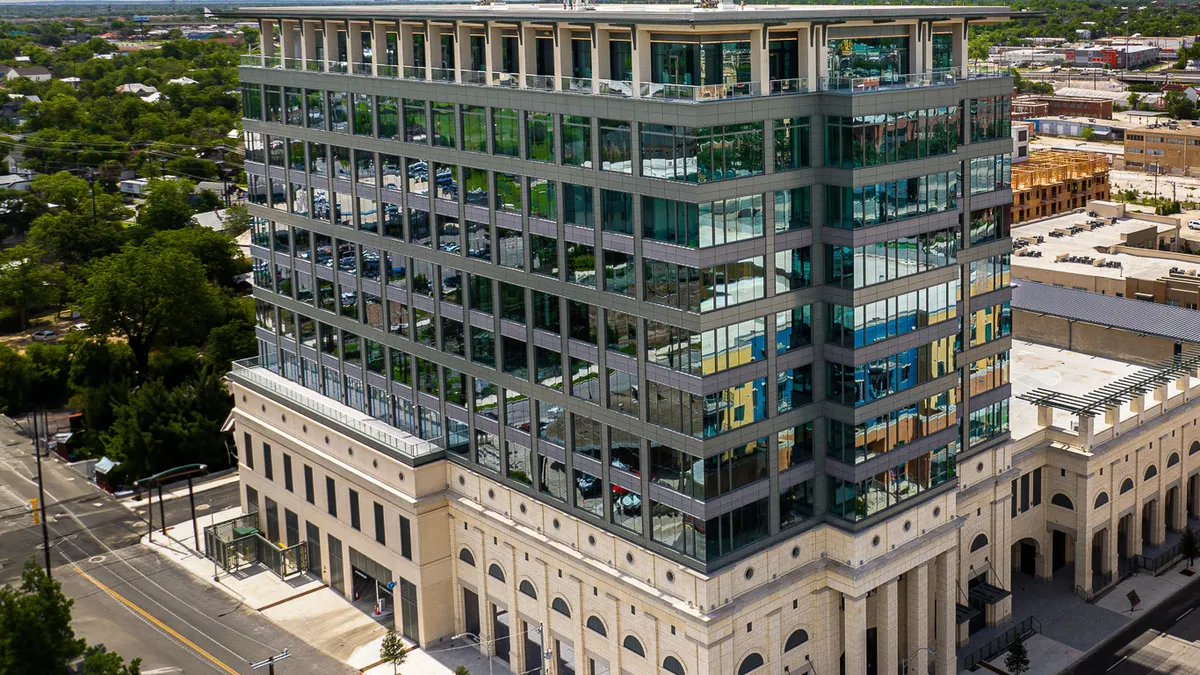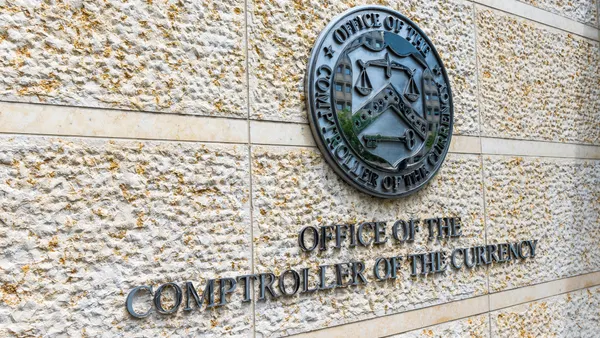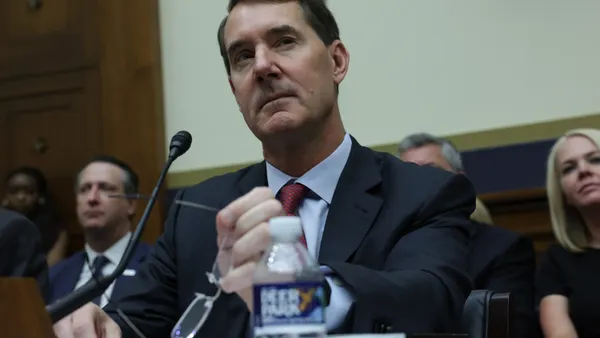Dive Brief:
- Comerica executives are “taking a hard look at expenses,” CEO Curt Farmer said Tuesday, as the lender has faced activist investor pressure to sell.
- Farmer flagged expenses related to real estate, headcount, technology and third parties as areas the Dallas-based company may trim, as it works to improve its efficiency ratio. When giving 2026 guidance during the company’s fourth-quarter earnings call in January, executives may be “looking for opportunities to lean in a little bit heavier on the expense side than we have year-to-date,” Farmer said at a Barclays investor conference.
- “The No. 1 priority of both management and our board is to protect and grow shareholder value,” Farmer said. “That's our duty to our shareholders, and we and the board take it very seriously.”
Dive Insight:
In late July, HoldCo Asset Management, a Fort Lauderdale, Florida-based investment firm that owns 1.8% of Comerica stock, called on the $78 billion-asset lender to sell itself to a larger bank, accusing Comerica of making “disastrous decisions” and having “objectively poor performance.”
HoldCo put forth PNC, Fifth Third and Huntington as potential buyers that could make sense. Should Comerica not pursue a sale, HoldCo intends to nominate five directors to the bank’s 11-person board, possibly in December, The Wall Street Journal reported this month, citing unnamed sources.
At the Barclays conference Tuesday, executives stressed their commitment to improving the bank’s performance.
“Our main focus remains on levering this robust franchise to enhance profitability and drive value, and we believe our strategic positioning and strong balance sheet give us the engine and flexibility to meet the demands ahead of us,” Farmer said.
Farmer noted he, CFO Jim Herzog and Kelly Gage, director of investor relations, have met with shareholders over the past 45 days, and long-term shareholders acknowledge “all the things they like about Comerica, but they also acknowledge that we need to improve our performance metrics.”
“We know it’s all about execution,” he said. “Myself and the board hold ourselves accountable to that high standard.”
Asked about considerations around joining another organization, Farmer said “we fully appreciate that this is an environment where there's always speculation about M&A across our industry,” and Comerica executives seek to manage for the long term.
“We are going to execute on the plan we've got, but also be aware of the landscape,” Farmer said.
The bank’s efficiency ratio was about 66% for the second quarter. The metric is found by dividing a bank’s noninterest expense by the sum of noninterest income and net interest income. A higher ratio suggests a bank is less efficient.
During the company’s most recent earnings call, Wells Fargo analyst Mike Mayo criticized Comerica’s efficiency ratio, asking Farmer why the lender had earned the right to remain independent.
Farmer acknowledged Tuesday the bank’s efficiency ratio is high, “which we continue to believe is a bit more on the revenue challenge than on the expense challenge, but, having said that, we're looking at every lever that we possibly can to improve that efficiency ratio and ultimately improve [return on equity],” Farmer said. “That includes a hard look at expenses.”
That review is underway now, he indicated. That might include real estate: Comerica has closed about 50 banking centers and “done a fair amount of rationalization of our portfolio” in the past couple of years, “but there’s always more opportunities,” Farmer said.
Comerica had 353 branches as of June 30, compared to 379 as of Sept. 30, 2024. The bank had about 7,565 employees as of the end of last year.
The bank’s management seeks to whittle expenses, Farmer said, but “we want to do that, though, in a way that protects some of the revenue things that we’re working on.”
That includes Comerica’s efforts to offset the loss of the Treasury Department’s Direct Express prepaid-card program, by adding more small-business deposits, and chasing embedded finance opportunities that tap the bank’s payments and treasury capabilities, he said.
“We’re trying to figure out that right balance,” between improving the bank’s performance in the short term, and driving revenue growth longer term, Farmer said. Other revenue-boosting efforts involve investments in the bank’s wealth management and capital markets businesses.
Comerica continues to manage the Direct Express program, he said; accounts have not yet migrated to another lender. Direct Express average deposits in the second quarter were $3.7 billion.
“It's been a bit of business as usual for us,” he said, “but at some point, we assume that a transition will occur.”














